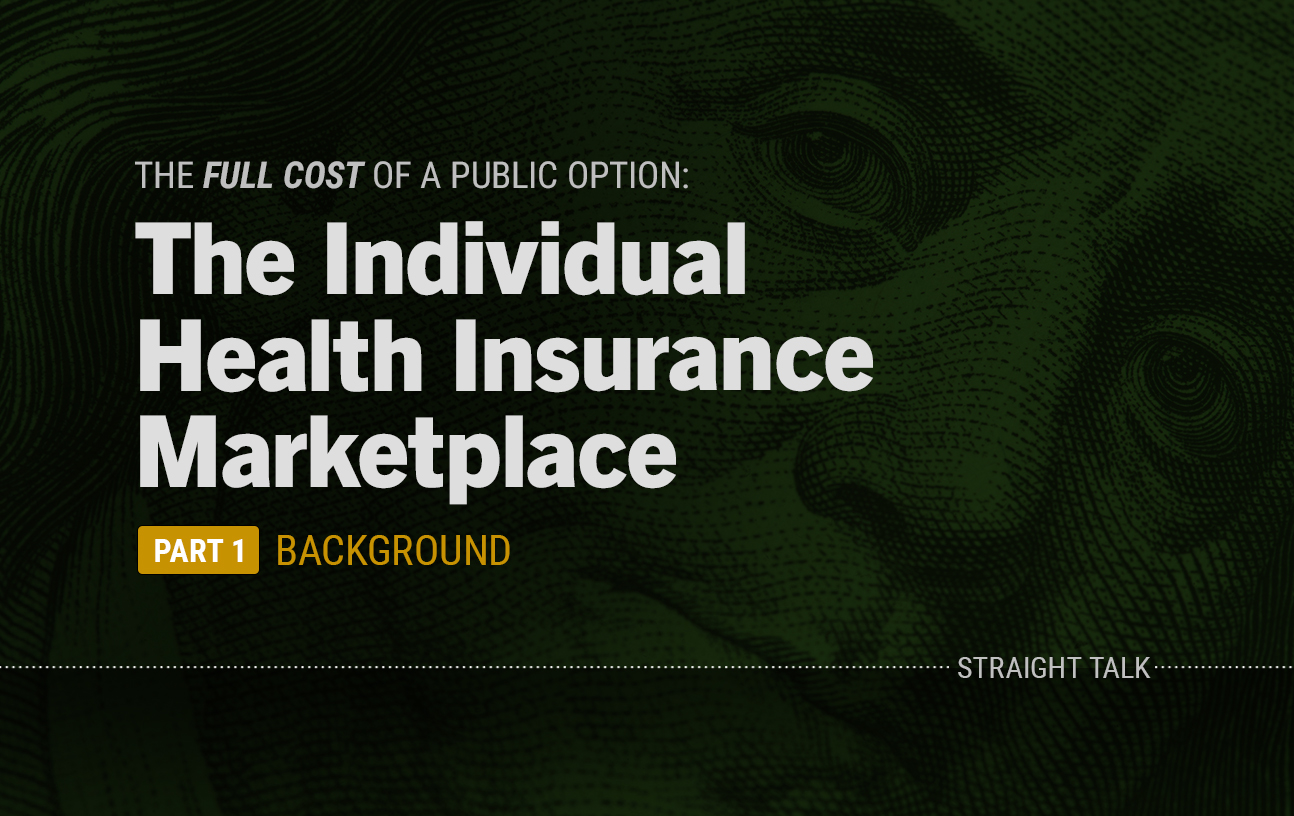Part 1: Background
Since early in 2013, American citizens who don’t get an offer of affordable health insurance through work (that’s about 10% of working adults) have had another significant coverage option.
They qualify to sign up for individual health insurance via healthcare.gov or the various state-run health insurance marketplaces scattered around the country.
In 36 states (Louisiana is one of them), that marketplace is operated by the federal government through www.healthcare.gov. Right now, we’re in the middle of a 90-day Special Enrollment Period on healthcare.gov.
Healthcare.gov has some historically unique features on the health insurance coverage it offers. They are:
- Plans are sold and priced without regard to the buyers’ current health status and conditions. Neither will affect the rates they pay, nor their eligibility to apply and qualify to get covered. You may have heard this called coverage “without pre-existing conditions.”
- Adult plan premiums are subsidized by the federal government for those with incomes between 139% and 400% of the Federal Poverty Level.
- Plan allocation of costs and the breadth of coverage are determined by formulas the federal government controls, via an agency created 10 years ago, the Center for Consumer Information and Insurance Oversight (CCIIO).
A Shallow Risk Pool
As any self-respecting actuary will tell you, the only way for a risk pool under these conditions to survive would be for people who have few health needs and are relatively young to join the coverage pool at the same rate older and sicker people join. Historically, when the entire risk pool is composed mainly of older, sicker people, the costs have been so high that no one could afford the insurance. And that is essentially what has happened over the past seven years in the marketplaces. The ACA originally had several “fences” and “nudges” designed to keep individual risk pools stable and affordable. Most of those are now gone, either having been tossed out in the courts, by Congress, or by the unreality of their original creation.
So, where does that leave us?
With a shrinking individual risk pool that is aging rapidly, and medical costs that are the highest in any pool we cover. If you owned a small company in Louisiana right now and bought health plan “A” from Blue Cross for $500/person, you would find the same plan “A” offered on healthcare.gov costing north of $1,000 per person. For the exact same coverage.
So, how on earth does anyone purchase coverage at those prices?
Simply put, they don’t. The Advanced Premium Tax Credits written into the ACA are being poured into the marketplaces to help folks, based on their incomes, afford that coverage. How does that work?
Diving into the Pool
Imagine we take an average 50-year-old male buying a mid-level benchmark plan on healthcare.gov in Baton Rouge today. He’s single, employed and doesn’t get a health plan through work, so he’s shopping for individual coverage. What is his actual rate going to be?
Depends on his income. The following table demonstrates what he has to pay for his coverage in 2021. Note here we are going to hold his age constant. Also, notice that not only does the federal assistance grow rapidly as income shrinks, but even deductibles and coinsurance payments are reduced as lower income levels are reported. Also worth noting, the REAL cost for this health plan for a 50-year-old, once all the federal rules are applied, is almost $800 per month! The actual premium the insured person pays is shown in the far right column.
| AGE | Annual Income | Deductible | Max Out of Pocket | In-Net Coins | Out-Net Coins | Tax Credit | Final Premium |
| 50 | >$55,000 | $2,800 | $8,550 | 70% | 50% | $0 | $777.55 |
| 50 | $45,000 | $2,800 | $8,550 | 70% | 50% | $408.92 | $368.63 |
| 50 | $40,000 | $2,800 | $8,550 | 70% | 50% | $449.88 | $327.67 |
| 50 | $35,000 | $2,800 | $8,550 | 70% | 50% | $513.33 | $264.22 |
| 50 | $30,000 | $2,600 | $6,800 | 70% | 50% | $582.78 | $194.77 |
| 50 | $25,000 | $550 | $2,850 | 80% | 50% | $645.76 | $131.79 |
| 50 | $20,000 | $550 | $2,850 | 80% | 50% | $703.20 | $74.35 |
Things get even more interesting as we hold income steady and let AGE fluctuate from line to line. Let’s use the exact same policy, exact same coverage, and hold the income steady at $55,000 per year. We’ll even look at child rates, assuming parents are buying a policy that covers their children.
| AGE | Annual Income | Deductible | Max Out of Pocket | In-Net Coins | Out-Net Coins | Tax Credit | Final Premium |
| 64 | >$55,000 | $2,800 | $8,550 | 70% | 50% | $0 | $1,306.08 |
| 55 | >$55,000 | $2,800 | $8,550 | 70% | 50% | $0 | $970.85 |
| 50 | >$55,000 | $2,800 | $8,550 | 70% | 50% | $0 | $777.55 |
| 40 | >$55,000 | $2,800 | $8,550 | 70% | 50% | $0 | $556.39 |
| 30 | >$55,000 | $2,800 | $8,550 | 70% | 50% | $0 | $494.13 |
| 20 | >$55,000 | $2,800 | $8,550 | 70% | 50% | $0 | $422.30 |
| 10 | >$55,000 | $2,800 | $8,550 | 70% | 50% | $0 | $253.06 |
Because the ACA rules that federal authorities enforce don’t allow pricing or eligibility to be determined by health conditions or status, all the emphasis in rate-setting falls on the cost-sharing built into a plan, and the age of the insured. But, the ACA authors required the ratios between the different ages be set based on a regulated formula that REQUIRES year-by-year rate setting and increases. This was done to ensure consistency, but it’s had expensive effects. Thus, the rates you see in the far right-hand column are not random. If any plan in any state set the 20-year-old rate at $422.30 (like above), then their 64-year-old rate would HAVE to be $1,306.08, under the ACA’s terms. No exceptions. Rates increase each year; check out the table in this post for the exact factors.
So, how many 60-somethings do you know with an income around $55,000/year AND an extra $1,300/month in their pocket just to afford health insurance? Not too many, I’ll wager. The ease at which people move in and out of this coverage as their health and healthcare needs change has discouraged younger, healthier folks from joining these risk pools until after they get sick.
In a state where the average age of the entire population is about 35, the average age of a healthcare.gov marketplace member is holding near 50. You might ask how many 20-somethings would prioritize health insurance to the tune of $400+ a month? Not many, sadly. I mean, that’s a decent car note.
How Do We Get More People into the Pool?
So Mike, why are these prices so high? I mean, a $2,800 deductible is not exactly chump change, either!
Great questions. It’s important to understand that the rates are at LEAST 80% determined by the usage and cost of healthcare in the pool of people who buy coverage on healthcare.gov. So here at Blue Cross, we have around 70,000 people in our healthcare.gov risk pool, and their healthcare costs and usage are sky-high, especially when compared to folks who get their coverage through jobs. Even at the same ages. That sounds crazy the first time you say it, but if you’ve been at this awhile, it starts to make sense.
The healthcare.gov rates are so high because the people in the pools are using MORE healthcare than their friends and neighbors in other risk pools. They use more because they are less healthy and older. And, younger, healthier folks avoid healthcare.gov risk pools if they can get coverage ANYWHERE else. And now, kids up to 26 years old can be covered on their parents’ work policies. Kids up to age 19 in households earning up to 250% of the poverty line qualify for coverage through Medicaid. And, around 200,000 people under age 25 are uninsured completely, for a variety of reasons.
In many ways, the risk pools in the ACA-created, individual marketplace called healthcare.gov are failing to control costs. Nearly all (90%) of the participants are getting federal money to help pay their premiums. Left out of this largesse is a very vocal, very influential, very angry group of people ages 55 to 64 who either are self-employed, have retired from their jobs, or are no longer working, but earn too much to qualify for tax credits. As you can see from our charts above, that price can get pretty high.
Now, this very vocal group of people ages 55 to 64 is lobbying Congress HARD for a solution to this problem. Some of the solutions look pretty good on paper but have dire consequences for the younger folks who are still shopping for coverage. And, implementing them would require a ton of new federal borrowing.
We’ll talk about the most likely solution, an individual public option, next time.





Leave a Reply